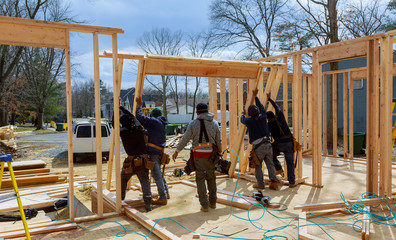Permit Sonoma has worked with the fire survivors of the Tubbs and Nuns fires ever since the terrible tragedies took place, issuing nearly 1,700 permits to rebuild homes and bridges in the unincorporated area that were damaged or destroyed in the flames. Leveraging the lessons learned through disaster, Permit Sonoma continues to build new efficiencies into how it serves the community.
 When the winds brought fire and destruction into Santa Rosa in October 2017, Permit Sonoma staff served the community as disaster service workers at the County of Sonoma, working in the Emergency Operations Center with Cal Fire throughout the duration of the incident.
When the winds brought fire and destruction into Santa Rosa in October 2017, Permit Sonoma staff served the community as disaster service workers at the County of Sonoma, working in the Emergency Operations Center with Cal Fire throughout the duration of the incident.
As the county transitioned from fire response to recovery, Permit Sonoma staff worked to assess the damage to impacted properties and provided services to fire survivors at the local assistance center in downtown Santa Rosa to re-establish credentials, retrieve building records, receive insurance advice and speak with construction specialists.
“During the months and years that followed the Tubbs and Nuns fires, Permit Sonoma staff rose to the challenge by creating new ways to meet the needs of those affected by the fires, whether they’d left the county or were living in temporary housing nearby,” said Permit Sonoma Director Tennis Wick. “That sometimes meant changing the way we did business, and ultimately, it led to many improvements.”
Alongside staff from the City of Santa Rosa, Permit Sonoma helped create a common website to guide survivors through the rebuilding process. Staff from Permit Sonoma attended dozens of weekly meetings with fire survivor block captains and participated in numerous community meetings about rebuilding.
Within four months of the fires, Permit Sonoma had opened its Resiliency Permit Center in a series of trailers on Fiscal Drive where specialists counseled fire survivors on permitting for rebuilding and processed permits within five days to first plan check.
The center operated separately from regular county permitting operations, supported by a consultant with expanded off-site resources and a narrower scope of review since, generally, driveways, septic systems and wells usually suffered only minor damage. The Resiliency Permit Center still operates today as Permit Sonoma transitions from third party contractors to an internal resiliency team.
Each of the county’s subsequent disasters has resulted in internal improvements at Permit Sonoma, based on an increased work tempo, the experience of the Resiliency Permit Center, and moving quickly into digital permitting. Building permit processing times are now 60 percent faster, falling from 15 to six weeks for the process time leading up to the first plan check. Well permit processing saw a more-than 80 percent increase in speed, from 11 to two weeks. Solar permits are now issued over the counter, and the Permit Sonoma staff are constantly looking to expand improvements to processes.
In the aftermath of the 2017 wildfires, property owners started rebuilding on more than 1,400 of the 1,949 parcels in the unincorporated area with one or more destroyed structures. Five years later, 65 percent of the structures that began the rebuilding process have been completed and another 25 percent are under construction.
